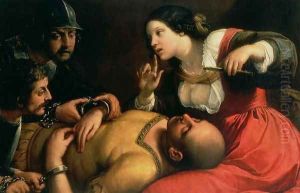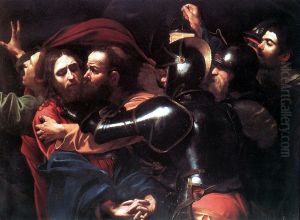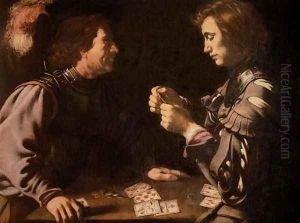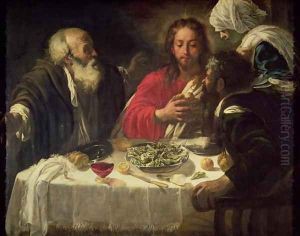Follower of Caravaggio, Michelangelo Paintings
Michelangelo Merisi da Caravaggio, known simply as Caravaggio, was an Italian painter active in the late 16th and early 17th centuries, a pivotal period that marked the transition from the Renaissance to the Baroque era. Born in Milan in 1571 and passing away under mysterious circumstances in 1610, Caravaggio's life was as dramatic and tumultuous as the paintings he produced. His innovative approach to art, characterized by the use of intense chiaroscuro and realistic, often gritty, depictions of religious and mythological scenes, left a lasting mark on the world of art and established him as a key figure in the Baroque movement.
Caravaggio's followers, known as Caravaggisti, were artists who were profoundly influenced by his style and techniques. These followers were not limited to Italy but spanned across Europe, adopting and adapting Caravaggio's use of dramatic lighting and naturalism. The Caravaggisti included artists such as Orazio Gentileschi, Artemisia Gentileschi, Bartolomeo Manfredi, and Gerrit van Honthorst, among others. They played a crucial role in spreading Caravaggio's innovative approach across Europe, influencing the development of Baroque art in their respective regions.
While Caravaggio himself led a life filled with personal struggles, legal problems, and a notorious temper, his art continued to gain recognition and patrons. His works were characterized by a remarkable sense of realism, a stark contrast between light and shadow, and a profound psychological depth in the portrayal of subjects. Caravaggio's influence on his followers was profound; they sought to emulate his dramatic use of light and shadow and his realistic portrayals of human figures. However, each follower also contributed their unique perspective, thereby enriching the Caravaggesque tradition.
Caravaggio's legacy is a testament to his ability to capture the complexity of the human condition through his art. His followers, by embracing and disseminating his innovations, helped cement his status as a pivotal figure in the history of Western art. Through their works, the essence of Caravaggio's art continued to inspire and influence generations of artists, contributing to the spread of the Baroque style throughout Europe. The Caravaggisti, with their diverse backgrounds and interpretations of Caravaggio's style, underscore the widespread and lasting impact of his work on the trajectory of European art.



